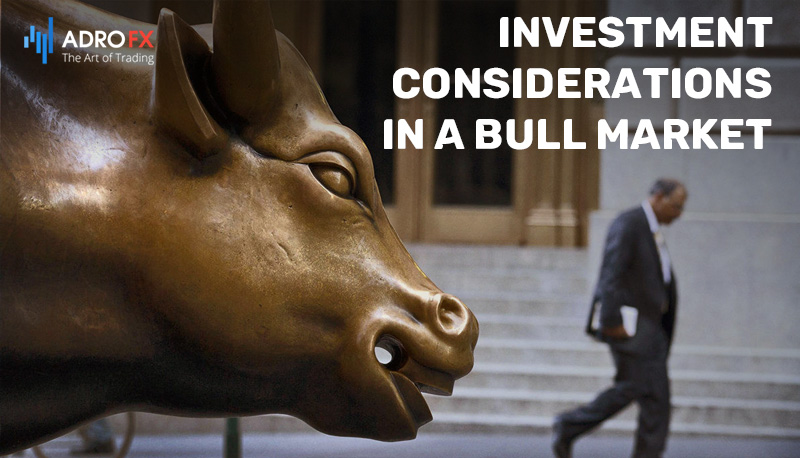Bear Market vs. Bull Market: What Investors Need to Know

The world of financial markets can be both exciting and daunting, filled with opportunities and challenges. Understanding the key dynamics of bull and bear markets is fundamental for investors. In this comprehensive guide, we explore the concepts of bull and bear markets, their differences, and the strategies to thrive in both.
What Is a Bull Market?
A bull market is a period characterized by rising stock prices and optimistic market sentiment. Typically, a bull market is declared when a broad market index experiences a 20% or more increase over a minimum two-month period. In the backdrop of a bull market, investors are generally enthusiastic about a robust economy and healthy job growth. Notably, the longest bull market in history commenced in 2009 and continued through 2020, emerging in the aftermath of a severe bear market linked to the financial crisis of 2007–08.
What Is a Bear Market?
Conversely, a bear market is defined as a time when stock prices are in decline and market sentiment is pessimistic. Typically, a bear market materializes when a broad market index declines by 20% or more over a minimum two-month duration. Bear markets are often characterized by low investor confidence and a deteriorating economy. The bear market that coincided with the financial crisis of 2008 witnessed the S&P 500 plummet by nearly 40% during the 2008 calendar year, transpiring during what some described as the most severe economic downturn since the Great Depression of the 1930s.

Key Similarities and Differences
Both bull and bear markets denote substantial market movements and are often intertwined with economic dynamics. Nevertheless, they possess both commonalities and distinctions.
Similarities:
- Economic and Political Factors: Both types of markets can be influenced by economic or political factors. A bear market may arise due to apprehensions of a recession or economic decline, while a bull market can be triggered by robust economic growth and job creation.
- Individual Stock Behavior: In either type of market, not all stocks conform to the general market trend. Some stocks exhibit counter-directional movements to the overall market, emphasizing that individual stock performance can be affected by factors unrelated to the broader market trends.
Differences:
- Market Direction: A bull market signifies a period of rising stock prices, while a bear market denotes a period of declining stock prices.
- Duration: Bull markets can endure from a few months to several years, exemplified by the record-breaking bull market from 2009 to 2020. In contrast, bear markets can persist for a few months to several years, with the longest bear market spanning 61 months during the Great Depression from 1937 to 1942.
- Comparative Duration: On average, bull markets tend to be lengthier, with an average duration of approximately 6.6 years. Bear markets, in comparison, are relatively shorter, with an average duration of about 1.3 years.
- Average Gain/Loss: Over the course of a bull market, the average cumulative gain is approximately 339%. In contrast, during a bear market, the average cumulative loss is roughly 38%.
How to Navigate Investing in Bull vs. Bear Markets
The truth is, most investors cannot accurately forecast the commencement or duration of bull or bear markets. In addition to full-fledged bull or bear markets, there are market upswings that fall short of the bull market definition, as well as market downturns that do not fully meet the criteria for bear markets.
Long-term investors are generally advised not to alter their investment approach to accommodate bull or bear markets. Instead, experts often recommend maintaining an asset allocation that aligns with their risk tolerance, investment horizon, and long-term objectives. Periodic portfolio rebalancing is encouraged.
Diversification stands as a sound strategy for most investors, irrespective of the prevailing market conditions. While bull and bear markets each have distinct definitions, it's crucial to recognize that not all bull or bear markets are identical.
For instance, the bear market of 2000 to 2002 was largely precipitated by the bursting of the tech bubble, with subsequent exacerbation due to the tragic events of 9/11. Even within this bear market, certain sectors remained profitable for investors.
Conversely, the bear market stemming from the 2008 financial crisis, which included a severe housing market crash, inflicted widespread impact across nearly every market sector. In this bear market, few, if any, safe havens were available to investors until its conclusion in early 2009. 
Investment Considerations in a Bull Market
In an ideal scenario, when investors identify the early signs of a bull market, they may opt to purchase stocks, stock mutual funds, and ETFs. As the bull market continues to climb, they might contemplate selling a portion of their equity holdings, or at the very least, adhere to their regular rebalancing routine.
A potential pitfall for investors during a bull market is the hesitance to sell and realize profits. Particularly in an extended bull market, investors may forget the hardships endured in the last bear market and begin to believe that the current bull market will endure indefinitely. This tendency could be one of the most significant risks investors face in a bull market.
Furthermore, investors should acknowledge that it's exceedingly difficult to consistently identify the peak of a bull market. Selling investments at the absolute market peak is improbable, except by sheer chance. Thus, it is vital to establish a predetermined selling strategy during a bull market rather than holding out for the perfect selling time. The latter approach often results in missing the market's peak and potentially incurring losses.
Investment Considerations in a Bear Market
When investors anticipate the onset of a bear market, it can be an opportune time to consider purchasing stocks, mutual funds, and ETFs at reduced prices. Depending on the severity and scope of the bear market, there may be attractive investment opportunities.
While buying stocks that have experienced price declines makes sense during a bear market, it's unlikely that most investors can accurately pinpoint the absolute market bottom, either for the bear market as a whole or for specific investments they are considering. Those who acquire stocks or other assets during a bear market should be prepared for the possibility of further price drops before reaching the bottom.
Investors should maintain a safety net of lower-risk investments to see them through the challenging phases of a bear market. This precaution ensures they won't be compelled to sell assets at a loss to meet financial needs during the bear market.
For individuals approaching or entering retirement at the onset of a bear market, a severe downturn can disrupt their retirement financial plans. If their portfolio is overly weighted toward riskier investments, encountering a bear market at this stage may necessitate a reduction in their retirement lifestyle or an extended period of employment to rebuild their retirement savings.
Final Thoughts
Both bull and bear markets are integral components of the normal long-term investment cycle. Investors are likely to experience both types of markets at different points in time, and their portfolios should be structured to withstand the challenges of both market environments.
Timing either type of market is exceedingly difficult, and those who attempt to do so often face disappointment and potential portfolio losses. A well-balanced approach typically serves as the most prudent course of action for the majority of investors.
About AdroFx
Established in 2018, AdroFx is known for its high technology and its ability to deliver high-quality brokerage services in more than 200 countries around the world. AdroFx makes every effort to keep its customers satisfied and to meet all the trading needs of any trader. With the five types of trading accounts, we have all it takes to fit any traders` needs and styles. The company provides access to 115+ trading instruments, including currencies, metals, stocks, and cryptocurrencies, which make it possible to make the most out of trading on the financial markets. Considering all the above, AdroFx is the perfect variant for anyone who doesn't settle for less than the best.










